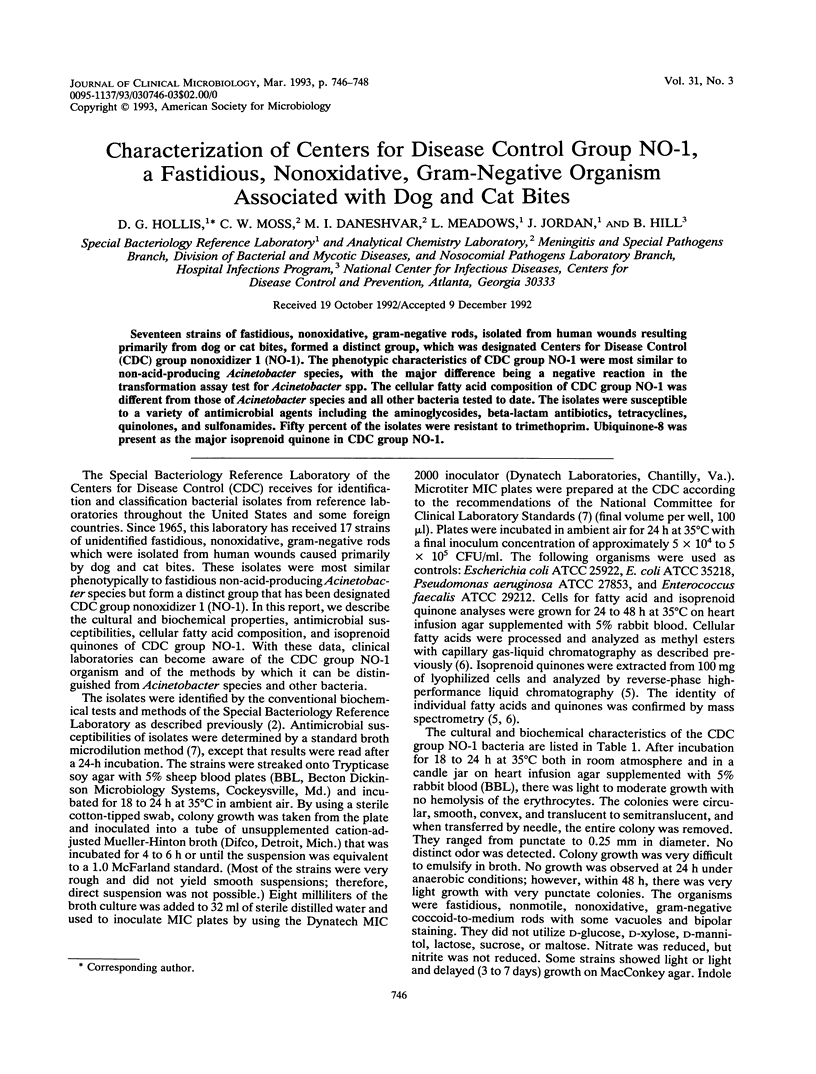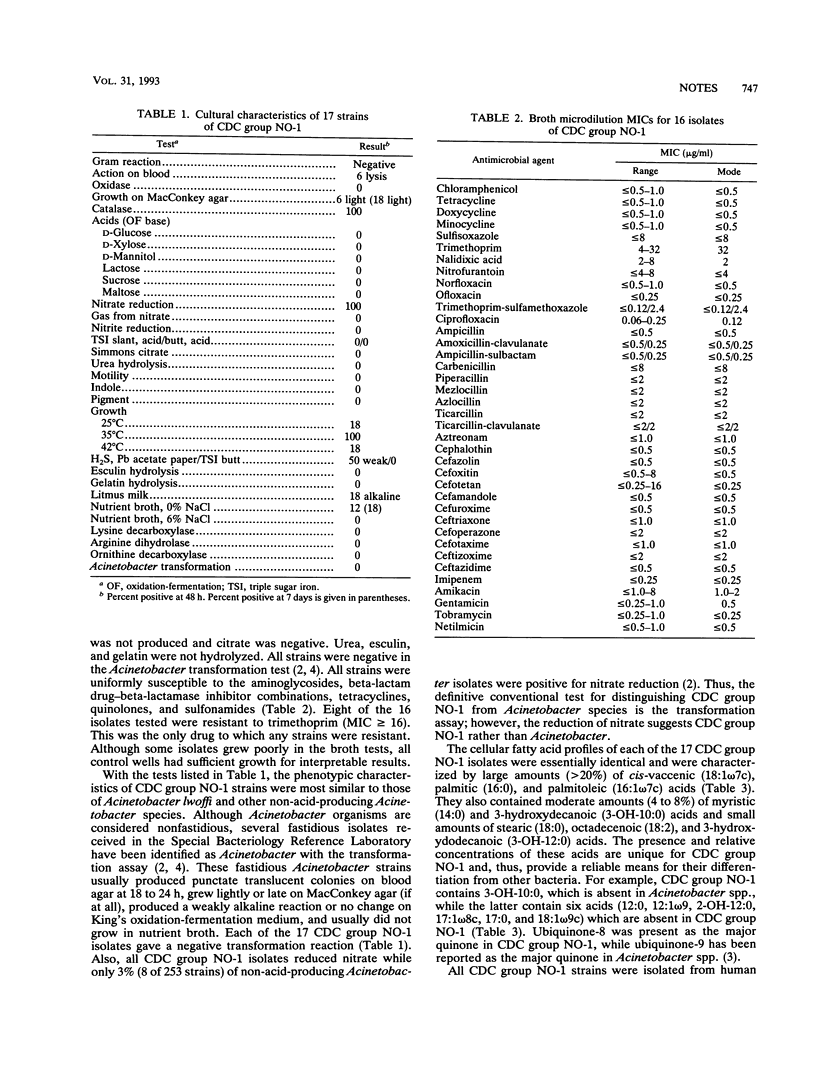Abstract
Seventeen strains of fastidious, nonoxidative, gram-negative rods, isolated from human wounds resulting primarily from dog or cat bites, formed a distinct group, which was designated Centers for Disease Control (CDC) group nonoxidizer 1 (NO-1). The phenotypic characteristics of CDC group NO-1 were most similar to non-acid-producing Acinetobacter species, with the major difference being a negative reaction in the transformation assay test for Acinetobacter spp. The cellular fatty acid composition of CDC group NO-1 was different from those of Acinetobacter species and all other bacteria tested to date. The isolates were susceptible to a variety of antimicrobial agents including the aminoglycosides, beta-lactam antibiotics, tetracyclines, quinolones, and sulfonamides. Fifty percent of the isolates were resistant to trimethoprim. Ubiquinone-8 was present as the major isoprenoid quinone in CDC group NO-1.
Full text
PDF


Selected References
These references are in PubMed. This may not be the complete list of references from this article.
- Bailie W. E., Stowe E. C., Schmitt A. M. Aerobic bacterial flora of oral and nasal fluids of canines with reference to bacteria associated with bites. J Clin Microbiol. 1978 Feb;7(2):223–231. doi: 10.1128/jcm.7.2.223-231.1978. [DOI] [PMC free article] [PubMed] [Google Scholar]
- Collins M. D., Jones D. Distribution of isoprenoid quinone structural types in bacteria and their taxonomic implication. Microbiol Rev. 1981 Jun;45(2):316–354. doi: 10.1128/mr.45.2.316-354.1981. [DOI] [PMC free article] [PubMed] [Google Scholar]
- Juni E. Interspecies transformation of Acinetobacter: genetic evidence for a ubiquitous genus. J Bacteriol. 1972 Nov;112(2):917–931. doi: 10.1128/jb.112.2.917-931.1972. [DOI] [PMC free article] [PubMed] [Google Scholar]
- Moss C. W., Guerrant G. O. Separation of bacterial ubiquinones by reverse-phase high-pressure liquid chromatography. J Clin Microbiol. 1983 Jul;18(1):15–17. doi: 10.1128/jcm.18.1.15-17.1983. [DOI] [PMC free article] [PubMed] [Google Scholar]
- Moss C. W., Wallace P. L., Hollis D. G., Weaver R. E. Cultural and chemical characterization of CDC groups EO-2, M-5, and M-6, Moraxella (Moraxella) species, Oligella urethralis, Acinetobacter species, and Psychrobacter immobilis. J Clin Microbiol. 1988 Mar;26(3):484–492. doi: 10.1128/jcm.26.3.484-492.1988. [DOI] [PMC free article] [PubMed] [Google Scholar]


